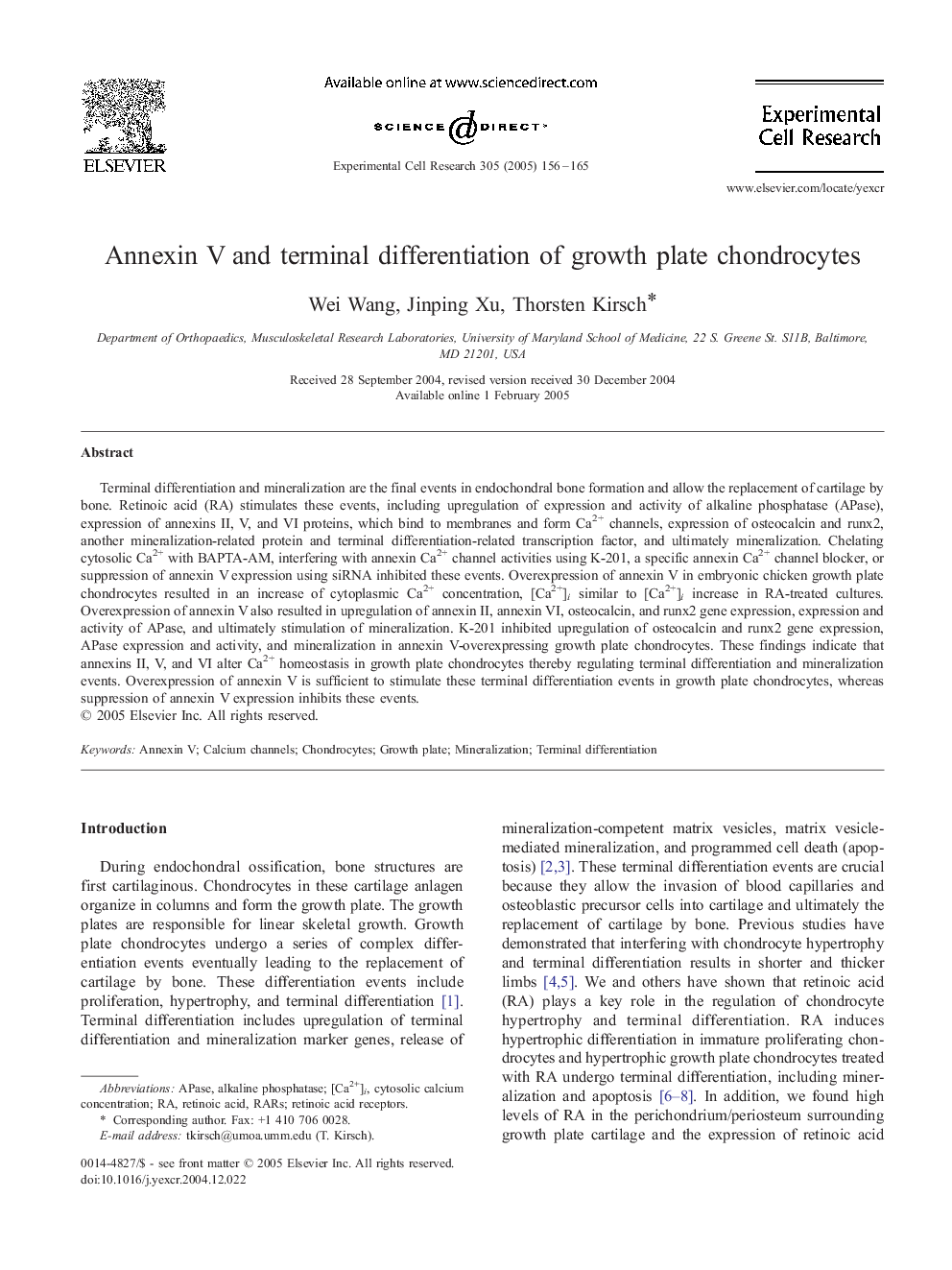| Article ID | Journal | Published Year | Pages | File Type |
|---|---|---|---|---|
| 10905487 | Experimental Cell Research | 2005 | 10 Pages |
Abstract
Terminal differentiation and mineralization are the final events in endochondral bone formation and allow the replacement of cartilage by bone. Retinoic acid (RA) stimulates these events, including upregulation of expression and activity of alkaline phosphatase (APase), expression of annexins II, V, and VI proteins, which bind to membranes and form Ca2+ channels, expression of osteocalcin and runx2, another mineralization-related protein and terminal differentiation-related transcription factor, and ultimately mineralization. Chelating cytosolic Ca2+ with BAPTA-AM, interfering with annexin Ca2+ channel activities using K-201, a specific annexin Ca2+ channel blocker, or suppression of annexin V expression using siRNA inhibited these events. Overexpression of annexin V in embryonic chicken growth plate chondrocytes resulted in an increase of cytoplasmic Ca2+ concentration, [Ca2+]i similar to [Ca2+]i increase in RA-treated cultures. Overexpression of annexin V also resulted in upregulation of annexin II, annexin VI, osteocalcin, and runx2 gene expression, expression and activity of APase, and ultimately stimulation of mineralization. K-201 inhibited upregulation of osteocalcin and runx2 gene expression, APase expression and activity, and mineralization in annexin V-overexpressing growth plate chondrocytes. These findings indicate that annexins II, V, and VI alter Ca2+ homeostasis in growth plate chondrocytes thereby regulating terminal differentiation and mineralization events. Overexpression of annexin V is sufficient to stimulate these terminal differentiation events in growth plate chondrocytes, whereas suppression of annexin V expression inhibits these events.
Keywords
Related Topics
Life Sciences
Biochemistry, Genetics and Molecular Biology
Cancer Research
Authors
Wei Wang, Jinping Xu, Thorsten Kirsch,
